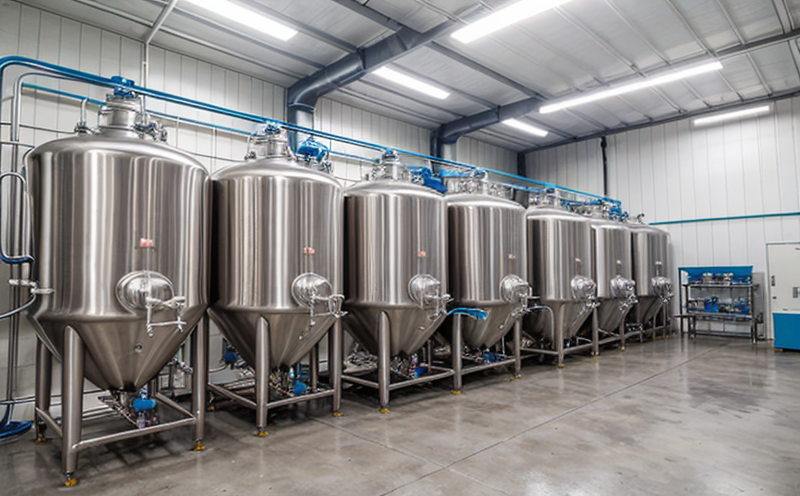OECD 311 Anaerobic Biodegradability Testing in Industrial Biotechnology
The OECD (Organization for Economic Co-operation and Development) Guideline 311, also known as the OECD 311 method, is a standardized protocol designed to assess the anaerobic biodegradability of organic compounds. This testing method plays a crucial role in the industrial biotechnology sector by ensuring that chemicals used in various industries are environmentally friendly and do not pose risks to human health or aquatic ecosystems.
Biodegradation refers to the decomposition of substances into simpler forms through biological processes, primarily conducted by microorganisms such as bacteria. Anaerobic conditions prevail when there is a lack of oxygen, which is common in landfills, wastewater treatment plants, and some natural environments like marshes. The OECD 311 method specifically evaluates whether an organic compound can be broken down under anaerobic conditions, thus providing insights into its potential environmental impact.
This testing process is particularly relevant for industries involved in the production of biodegradable plastics, pharmaceuticals, agricultural chemicals, and other synthetic compounds where their ecological footprint needs to be minimized. By ensuring that these substances are fully biodegradable under anaerobic conditions, companies can comply with regulatory requirements and contribute positively to sustainability goals.
The OECD 311 protocol involves several key steps including the preparation of inoculum, cultivation in an anaerobic environment, and subsequent incubation followed by analysis. The method is designed to mimic real-world scenarios where organic compounds may encounter both aerobic and anaerobic conditions during their lifecycle. Compliance with this standard helps manufacturers ensure that their products meet stringent environmental standards set forth by regulatory bodies.
Given its importance in the industrial biotechnology sector, understanding the intricacies of the OECD 311 method is essential for quality managers, compliance officers, R&D engineers, and procurement professionals. This knowledge enables them to make informed decisions regarding product development, regulatory compliance, and sustainable business practices.
Scope and Methodology
The OECD 311 Anaerobic Biodegradability Testing covers the evaluation of organic compounds' ability to be degraded under anaerobic conditions. The scope includes both simple and complex organic substances, such as biopolymers used in industrial applications.
- Preparation of inoculum using defined microbial cultures
- Cultivation of microorganisms under controlled anaerobic conditions
- Incubation period to allow for degradation processes
- Analytical methods for quantifying residual substrate after incubation
The protocol specifies detailed procedures for each step, ensuring accurate and reproducible results. Compliance with OECD 311 helps ensure that industrial biotechnology products are safe and sustainable by verifying their full biodegradability under anaerobic conditions.
Industry Applications
| Application Area | Description of Use |
|---|---|
| Biodegradable Plastics Manufacturing | Evaluating the environmental impact and safety of biodegradable polymers used in packaging materials. |
| Agricultural Chemicals Development | Assessing the decomposability of pesticides to prevent long-term accumulation in soil. |
| Pharmaceutical Manufacturing | Ensuring that pharmaceutical ingredients are fully biodegradable, reducing environmental pollution risks. |
| Biofuel Production | Evaluating the anaerobic biodegradability of biofuels to improve their sustainability and efficiency. |
The OECD 311 method is widely applicable across various sectors, including those focused on sustainable product development. By utilizing this testing approach, companies can ensure that their innovations meet rigorous environmental standards while maintaining competitiveness in the market.
- Ensures compliance with international regulations such as ISO and ASTM
- Supports R&D efforts aimed at creating more eco-friendly products
- Facilitates better decision-making for sustainable business practices
Quality and Reliability Assurance
Ensuring the reliability of biodegradability test results is critical to maintaining product quality and regulatory compliance. The OECD 311 method incorporates several measures to guarantee accurate outcomes:
- Inoculum Selection: Defined microbial cultures ensure consistent performance across tests.
- Controlled Conditions: Strict control over environmental parameters minimizes variability.
- Reproducibility: Detailed protocols allow for repeatable experiments, enhancing trustworthiness.
Compliance with the OECD 311 standard not only enhances product reliability but also fosters industry-wide confidence in biodegradable materials. This ensures that consumers and regulatory authorities can rely on the results generated from these tests.





